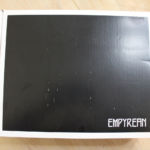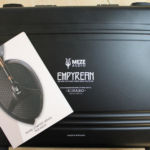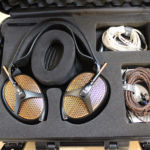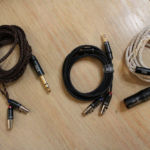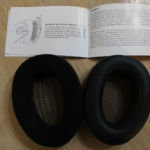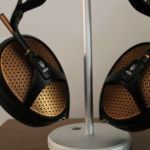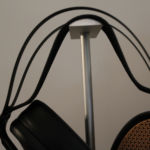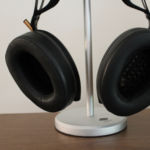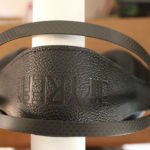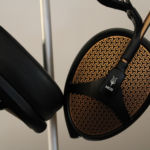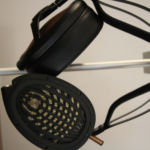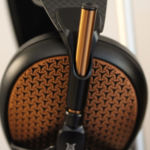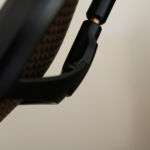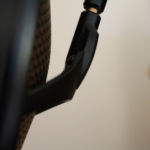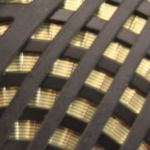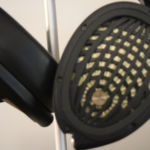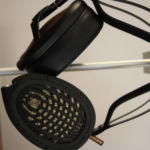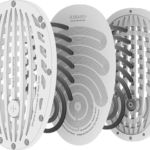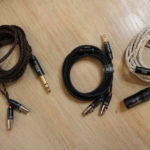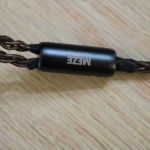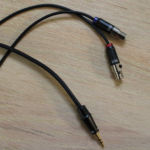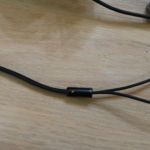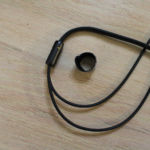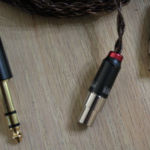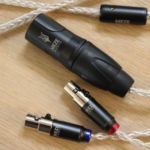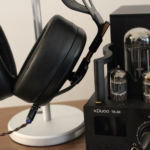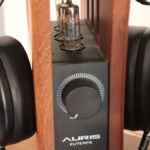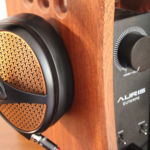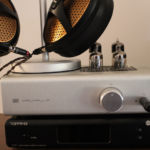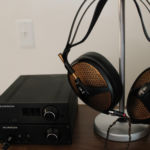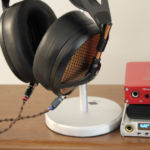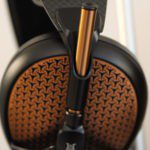Meze Empyrean
disclaimer: I received the Meze Empyrean as part of a review tour. I got to keep it for 14 days before sending it on to another reviewer. I have no financial interest in Meze or any of its distributors but will admit to owning the 99 Classic and having reviewed the Rai Penta previously so I have spoken to Anto Meze in the past and do have at least a casual acquaintance there. If you are interested in Meze products or the Empyrean, visit their website. To purchase the Empyrean in the USA, I recommend Apos Audio, I have no financial interest in Apos but know for buyers in the US their shipping is quicker than a lot of other options.
Unboxing / Packaging:
Well for starters, when unboxing a $3200 headphone, one has a right to expect things to be extraordinary and from the word go, the Empyrean delivers. Once the outer box is opened, it reveals an anodized aluminum briefcase with a small booklet on top introducing the Empyrean. Opening the case reveals the headphones, 2 sets of pads, 3 cables, and various warranty cards, thank you notes (signed by Anto no less), and instructions all packed neatly in their own compartments in the foam to prevent scratches and bumps in transit. Hinges are aluminum and the only plastic in sight is the handle and some parts of the locks. Overall, it is a very sturdy case and while I’d stop short of using it as luggage, it’s ready for about anything short of that kind of abuse. The included pads are leather and alcantara and do alter the sound a bit (more on that later). Cables include a portable 3.5 single ended, a heavier braid 6.3mm, and a pro-style XLR terminated cable so pretty much all use cases are covered. (As a reminder, this is what is included on the tour, the retail package has one of the three cables with the other two being add-ons that can be ordered separately). I must say this pretty much sets the bar for unboxing experiences as it made the Hifiman presentation box seem a bit cheap by comparison.
Build/Fit:
The first thing I noted when lifting the Empyrean out of the case was the weight, or more precisely lack thereof. I expected them to be heavier based on the look and materials but they are quite pleasant and weighed a bit less than some others in my collection. The headband is quite flexible and relies on the weight of the cups to help with tension. This makes for a very comfortable rig, but one that I don’t recommend using during periods of activity as it will not stay in place as readily as others with more clamping force. Having said that, no-one really wears these on their treadmill do they? Fit and finish is extremely well done with anodizing matching between parts to a degree that is hard to accomplish. I even borrowed my daughter to test a few parts with a spectrocolorimeter she had been playing with from the university and found most pieces were either exact or within a very small tolerance. When a colorimeter has trouble finding the differences, you know your anodizing is well matched. At first glance it looks to be very few parts, but closer inspection reveals there are quite a few smaller parts. Adjustments for example have the vertical cup height controlled by a friction control using the copper colored shafts, this also lets the cups pivot on the vertical axis. Below that, the empyrean uses a different style connection between the cup and gimbals than is typical. Usually we see a pivot at the junction between cup and frame and the frame itself is solid, but here the junction between frame and cup is solid with a hinge instead being located at the junction of the horizontal and vertical frame components. A close look at the last two photos in the group below shows the joint in both relaxed and extended position, what cant be seen in the photos is the fact that the joint is spring loaded and helps maintain a good seal and provides some of the clamping function of the Empyrean rather than relying on pressure from the headband. The cups are beautifully machined and finished as well and pads are magnetically attached so are very easy to swap without risking damage to pad or frame in the process. Again impressive workmanship all around.
Internals:
The driver in the Empyrean is made for Meze by Rinaro Isodynamics. Rinaro started out as a Soviet era government run research firm and has evolved since the collapse into an international concern making high end acoustic components. The driver in the Empyrean is listed as a hybrid and can best be thought of as an attempt to blur the lines between a planar magnetic and an electrostatic driver. It has the advantages of a planar in the sense that it does not need a high voltage energizer, but utilizes a diaphragm not dissimilar to an electrostatic in form or function. Also, with two different traces (the circular at the lower end and the serpent shape above) the Empyrean can be thought of as similar to a dual driver but on a single membrane and thus not requiring a crossover. Per Rinaro, the Serpent handles the lower frequencies while the circular driver handles the upper frequencies Per Meze and Rinaro, the advantages are reduced weight and greater reaction speed which in turn reduces THD and improves sensitivity. Meze touts the Empyrean as a flagship you can run off a phone without amplification and while I did find it scales qualitatively (more than a little too), it does indeed work well from a phone. Specs back this up as the empyrean is listed as 31.6Ω with a sensitivity of 100dB/mW. For more information on internals, see Meze website as it goes into considerable detail.
Cables:
Under normal circumstances, when one orders the Empyrean they are presented with the choice of three cable options. You can request that yours be shipped with one of the following; the 3 meter cable with 6.3mm jack, a 1.3meter cable with 3.5mm jack for portable use, or a 3 meter 4 pin XLR balanced cable. All cables terminate at the headphone end with mini XLR terminations. There are also two upgrade options sold on the Meze website, a Silver plated model at $499 and a copper at $349. Both are made of ultra-high draw-ability single crystal copper with 140 conductors in 8 wire braid up to the splitters and then two 4 wire braids above that point. All use Jensen silver solder for all connections and TPE Sleeves to protect the wire from oxidation. I found all cables well made and with good functionality. All show the same level of craftsmanship expected as part of this package. I have no source that will accept all three of these style of cables without at least one of them requiring an adapter so will refrain from any discussion of how cables impact the sound as I have no way of attributing 100% of changes made to a cable and not either changes in source or adapters used.
Sound:
Before diving into a discussion of sound, we need to address the pads. The Empyrean ships with Alcantara and Leather pads and the two do offer slightly different tunings. Choosing leather produces the more neutral signature of the two (somewhat surprisingly as usually leather enhances bass) while the alcantara does boost the bass very slightly and creates a slightly warmer sound with a very mild recess to the lower mids as a result. I found myself preferring the leather pads, but those who like a touch more warmth may well opt for the Alcantara version. The good news here is the attachment system designed by Meze is one of the best I have encountered and means if you feel like changing pads frequently, there is little risk of damage to either the pad or the cup, and little time involved in making the swap as no intricate operations are required. Simply lift one pad away from the cup starting at the top and lower the other into place starting at the bottom. In practice when using due care this operation takes about a minute including retrieving the new set of pads from the case and placing the removed set back in it.
Bass:
With the leather pads in place, the Empyrean is near ruler flat from the low 20s where roll off becomes evident up through roughly 1kHz. Bass is well detailed, and very quick in both attack and decay leaving just a little lingering warm in the mid bass. While not bass boosted, the Empyrean does have good rumble and slam when called upon and can in no way be considered bass shy either. This is where source material and components will play a huge role in the users perception of the Empyrean. If the track is boomy, muddy, or overly aggressive, the Empyrean will be as well. If the track simply doesn’t go much below the 50Hz mark, the Empyrean will appear to roll-off higher up. If however the stars align and a good track on good gear is presented, the Empyrean does a masterful job of presenting it in full detail and with its entire dynamic range on display.
The Alcantara pads do add a small mid-bass bump with a bit more attendant warmth and a slight step back of the lower mids. Those looking for a bit of extra warmth may prefer this signature, but for me the leather pads were the better option.
Mids:
If you’re read my reviews, you’ll know that I am a lover of mids and the fastest way to elicit negative comments from me is to obscure them with too much bass bleed, recess them behind the upper-mids/lower treble, or thicken them too much and present an unnatural timbre to strings. Turns out the way to elicit positive remarks is to make a headphone that presents the mids with a mild forward push as you move toward the upper-mids/lower treble (leather pads) with stunning clarity and detail and a very effortless presentation. Strings have good tonality all the way through the range, which is no small feat in itself. I think the thing I was most taken by was the layering and how cleanly the Empyrean is able to stack different voices in complex tracks with no hint of thickening or compression to the sound. This is easily one of the best headphones I’ve heard for listening to string quartet or full orchestral pieces for that reason. Upper-mids are emphasized and vocals do step forward of the mix as a result. This is especially true with higher vocals that are presented a bit closer to the listener than their lower counterparts.
Treble:
With mids being the star here, treble takes a slight step back, not enough to be detrimental, but enough to keep the laid-back easy going nature of the Empyrean intact. With the upper-mid boost, it would be easy to become a bit strident if the treble were allowed to simply follow the same path. Luckily, the lower treble falls back gently from the mids and gives enough energy to feel open and to present percussion well, without any tendency to be harsh. Snare rattle is realistic and high-hats sound good as well with no metallic sound and no dullness to the crash. Here again detail is very good with speed giving the empyrean a clean overall sound. Remember here that clean and sterile are different things and the Empyrean is in no way sterile. ng sessions.
Soundstage / Imaging:
The stage on the Empyrean is well proportioned and well sized and seems quite natural. Instrument separation is extremely good and seating the orchestra is straight forward with no large overlaps or gaps between and no incidents of misplaced items side to side vs front to back. I came away feeling as the Empyrean does a good job of mimicking the actual stage size of an orchestra and while not cavernous like the HD800 can be, it did a good job of reproducing the actual venue for live performances. This is the one place I felt the alcantara pads had the upper hand in that the stage depth was markedly larger with the alcantara than the leather. Imaging is spot on as well with objects being easily tracked in space and positions being very tightly defined in space. Layering was extremely good with no tendency to compress as tracks got busier and no blurring or thickening when playing tracks like Blues hand me down that is notorious for causing both.
Synergy:
I tried to mate the Empyrean with a bit of everything just to see what it liked and what it didn’t. In the desktop arena, I used a Valhalla/Bifrost combo, a Topping D90MQA/Valhalla combination, D90MQA with Asgard2 and Burson Fun, Burson Swing/Fun, Auris Euterpe, and Xduoo Ta-30. For portable testing, I used the Shanling M5s, DTR1, WM1A, Earmen TR-amp, Xduoo XD-05+, and the ifi iDSD micro. While the Empyrean did well with everything, it actually performed best with some of the lower powered sources. Of the desktop sets I used, I found the Euterpe to be a fantastic pairing when a warmer 12at7 was used in the pre-amp (Mullard/Amperex) as they gave the Empyrean a little more warmth. The Burson combination was also very good and provided the most detailed performance of the day, but was a bit cooler and came off as slightly less musical and more analytical than the Euterpe.
Portable use went to the DTR1 and Earmen TR-Amp as the best matches as both offered great detail and good dynamics. If I had to chose only one, I’d probably go with the Tr-amp as it could be used in both portable and desktop roles, but the DTR1 is so convenient on the go, its hard to argue against.
The least compatible of the bunch was probably the Ta-30 as while it sounded good, the brute force of an amp capable of pushing nearly 4 watts simply isnt needed with the Empyrean and left the user with very little usable volume adjustment. The Ta-03s on the other hand was a much better fit for those looking at a small desktop tube DAC/amp.
Thoughts / Conclusion:
The Empyrean stakes a claim to being one of the world’s best with its price tag, and in large measure backs up that claim with its build and performance. The fact that it can be driven by a low powered source makes it a rarity in that realm, and the fact that it has nearly the speed of an electrostatic without requiring an energizer puts it in a class with very few competitors (LCD-4). While comparing the LCD4 to the Empyrean, the first thing I noticed was how much more fluid the delivery of the Empyrean is. While the LCD4 may be ever so slightly more detailed, it definitely doesn’t have the musicality or easy going nature of the Empyrean. Nothing I threw at the Empyrean could make it struggle, nothing weighed it down, or sounded off. It simply took everything I had to throw at it in stride as if it was all in a day’s work. In that regard, I find the Empyrean not unlike most of Meze products in that they all seem to share a laid-back, easy going demeanor which makes their delivery sound nearly effortless. Some like the 99s sacrifice some level of detail for that smoothness, the Empyrean shows that when given an unlimited budget, that trade off doesn’t have to be made. I came away understanding why those with the funds to do so, invest in the Empyrean, and while I may not have $3300 to spend on a headphone myself, I can’t fault those who do. It is a spectacular way to put on your favorite playlist and lose track of time. I found it hard at times to remember I was supposed to be reviewing it and listening for technical details and not just enjoying the music. The only knock on the Empyrean is that for the price, I would like to see both a portable (3.5 terminated) and an XLR or pentaconn terminated desktop cable included in the bundle. That is what kept the accessory score from reaching the level of the other categories.
-
Bass - 9.5/109.5/10
-
Mids - 9.5/109.5/10
-
Treble - 9/109/10
-
Soundstage - 9.5/109.5/10
-
Imaging - 9/109/10
Summary
Pros: beautiful build quality, well tuned and voiced, most effortless delivery I’ve heard to date.
Cons: Cost, unforgiving of poor sources.


